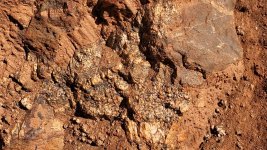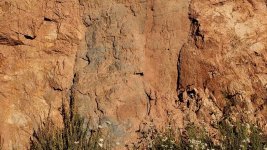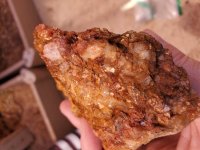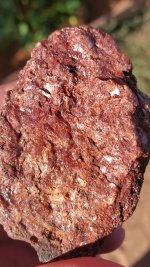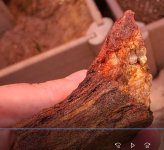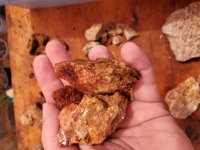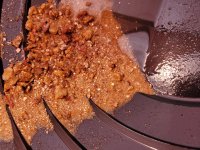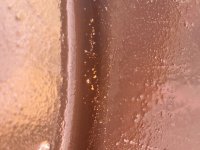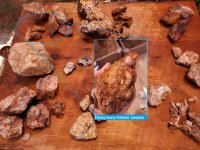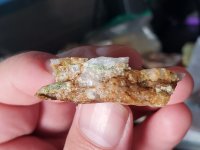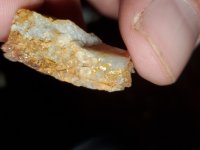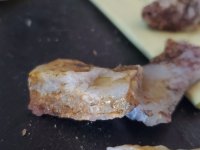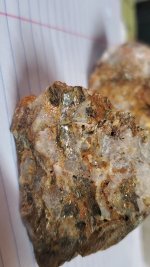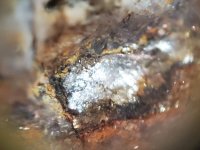I am going to start a journal because I'm likely going to be posting a lot about my journey until I find my first Au, and the journal section seems the best place to share frequent updates without spamming the forum.
Introduction
- I've had no prior mining or gold panning experience
- I have never taken a geology class (at least that I remember)
- I have been reading and researching (yes, youtube counts as research!) the past 4-5 weeks.
- I've been an avid hiker all over SD county, so I know the back country very well (mountains and desert)
I tend to go through series of obsessions, and for the last 4-5 weeks its been gold prospecting. I have been consuming as much information as possible since I knew I had a lot to learn. I am considering this journal my documented learning experience
My Research
Is there gold in San Diego county? Yes, it's not mother-lode country, but we definitely have gold.
Where is gold typically found in San Diego? Out east in the mountains and desert, Cleveland National Forest, Julian, Banner, Anza-Borrego etc.
How did you do your initial research?
Google is my library, I searched for "San Diego Gold History" to find out the areas and host rock where gold has been found. I found a surprising amount of old (late 1800's early 1900's) books, journals, and newspapers available online that described some of the old mines in the area in great detail, that combined with USGS reports have been helpful to narrow down my targets. Googling the names of old mines would bring up some old newspaper articles about the mine and reveal more secrets to where to look. Julian was the hot spot in the late 1800's and once the hard rock miners came in to town, they mainly found their gold in quartz veins running at a NNW direction. The gold was described as very rich, yielding 2.5 ounces per ton .
.
Anyone else looking to prospect in San Diego, I suggest you at least skim through all 41 pages of this report https://core.ac.uk/download/pdf/286730651.pdf
Review geologic maps with locations of old mines and locate similar areas nearby.
Use mylandmatters.org and thediggins websites to locate claims and make sure I'm not claim-jumping.
My Goal
Locate and retrieve gold in the wilderness of San Diego county. Placer or lode.
What's Next?
Get out to different locations and prospect for potential Au discoveries.
So far I have tried creek panning and crevicing in one location, and have taken some small samples in the Pine Valley/Alpine district, and Mt Laguna district.
1. Purchase a rock crusher (need to crush up and pan those samples)
2. Get out and get more samples and/or pan.
3. Repeat step 2 until Au is found, or go somewhere else (further east into the desert, or further north towards Julian)
My next outing is this Saturday. I will post some updates.
Until next time, enjoy the view from the PCT looking down at Aqua Caliente and Anza-Borrego.
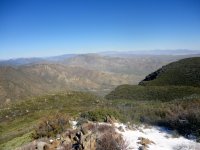
Introduction
- I've had no prior mining or gold panning experience
- I have never taken a geology class (at least that I remember)
- I have been reading and researching (yes, youtube counts as research!) the past 4-5 weeks.
- I've been an avid hiker all over SD county, so I know the back country very well (mountains and desert)
I tend to go through series of obsessions, and for the last 4-5 weeks its been gold prospecting. I have been consuming as much information as possible since I knew I had a lot to learn. I am considering this journal my documented learning experience

My Research
Is there gold in San Diego county? Yes, it's not mother-lode country, but we definitely have gold.
Where is gold typically found in San Diego? Out east in the mountains and desert, Cleveland National Forest, Julian, Banner, Anza-Borrego etc.
How did you do your initial research?
Google is my library, I searched for "San Diego Gold History" to find out the areas and host rock where gold has been found. I found a surprising amount of old (late 1800's early 1900's) books, journals, and newspapers available online that described some of the old mines in the area in great detail, that combined with USGS reports have been helpful to narrow down my targets. Googling the names of old mines would bring up some old newspaper articles about the mine and reveal more secrets to where to look. Julian was the hot spot in the late 1800's and once the hard rock miners came in to town, they mainly found their gold in quartz veins running at a NNW direction. The gold was described as very rich, yielding 2.5 ounces per ton
 .
. Anyone else looking to prospect in San Diego, I suggest you at least skim through all 41 pages of this report https://core.ac.uk/download/pdf/286730651.pdf
Review geologic maps with locations of old mines and locate similar areas nearby.
Use mylandmatters.org and thediggins websites to locate claims and make sure I'm not claim-jumping.
My Goal
Locate and retrieve gold in the wilderness of San Diego county. Placer or lode.
What's Next?
Get out to different locations and prospect for potential Au discoveries.
So far I have tried creek panning and crevicing in one location, and have taken some small samples in the Pine Valley/Alpine district, and Mt Laguna district.
1. Purchase a rock crusher (need to crush up and pan those samples)
2. Get out and get more samples and/or pan.
3. Repeat step 2 until Au is found, or go somewhere else (further east into the desert, or further north towards Julian)
My next outing is this Saturday. I will post some updates.
Until next time, enjoy the view from the PCT looking down at Aqua Caliente and Anza-Borrego.

Amazon Forum Fav 👍
Last edited:




